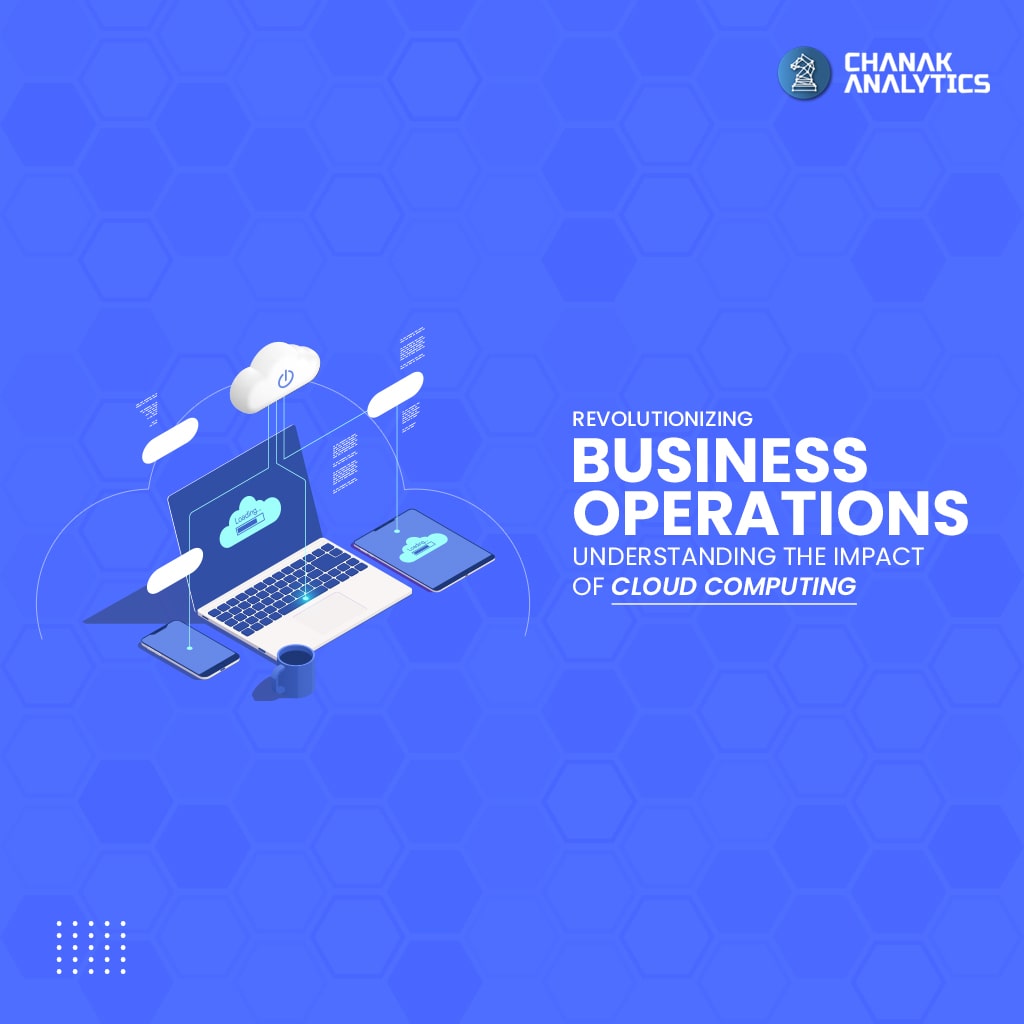Revolutionizing Business Operations: Understanding the Impact of Cloud Computing


Cloud computing is the beginning of a new era that changes our ways of storing and processing data and running programs. It is different from the local server or device, as it is accessed remotely over the internet using internet-connected facilities for services such as storage, processing power, and applications as they are needed. Consumers get information from different resources whenever and wherever they want, using any device with internet access. It excludes the requirement of a physical warehouse, leading to scalability, flexibility, and lower cost. Various types of cloud services are available for use—public, private, or hybrid—that can be deployed according to different needs. Cloud computing is indeed an intrinsic part of modern technology!
The Strategic Benefits of Cloud Computing for Business Success
In the digital age, cloud computing, especially OpenStack, which comes with plenty of benefits, is transforming the way businesses do their operations. It changes how they work in today’s digital world.
- Cost Efficiency: Through the use of OpenStack, cloud services can save a huge amount of money on infrastructure. It does away with bulky hardware and lets enterprises trade-in for a pay-per-use model.
- Scalability: OpenStack does not just offer the highest scalability but also makes it easy for businesses to scale up or down according to demand. This makes resources more efficient, which enables them to fit diverse workloads.
- Enhanced Collaboration: Due to cloud computing, collaboration processes are becoming smoother. OpenStack offers a platform to share resources and data from different departments, which is a good approach, and teamwork can even go beyond geographical barriers.
- Improved Security: Unlike the misconceptions circulating it, OpenStack remains a cloud computing stronghold with its security architecture. It provides data integrity, encryption, and tight access controls, thus protecting confidential data information.
- Global Accessibility: From the reliability of the cloud infrastructure to its accessibility from anywhere, the cloud is a means for remote working and international expansion.
Incorporating OpenStack into cloud computing simplifies businesses’ requirements as it cuts costs, and brings scalability and security, collaboration, and global accessibility.

Navigating the Cloud: Insights into Key Statistics and Market Dynamics
Cloud computing is revolutionising sectors, with strong statistics and industry trends demonstrating its exponential growth.
- Market Expansion: The skyrocketing cloud computing market gradually shows no signs of slowing down, with projected mass demand worth about £300 billion by 2023 across businesses of varying sizes. Translating this into rupees, this colossal number is around 30 lakh crore rupees.
- Cost Efficiency: Companies with distributed computing in the cloud witness significant cost savings, with some sources indicating a 30–50% decrease in operational costs.
- Scalability and Flexibility: The cloud is desirable because it is scalable. Companies can smoothly peak or trough their services with the help of technology, which gives them the advantage of being able to react quickly and effectively to market changes.
- Security Concerns: As such, cloud adoption soars, but security keeps being the main issue. Nevertheless, encryption improvements and stricter security measures are solving these issues.
- AI Integration: There is a close merging of cloud computing and AI; 80% of enterprises are expected by 2025 to weave their AI capabilities into their cloud applications, where they produce innovation and efficiency.
While these trends mature, it becomes critical for businesses seeking an edge and output to know this landscape of distributed computing in the cloud.
Exploring the Cloud: Understanding Different Service Models
• Infrastructure as a Service (IaaS)
- Facilitates virtual resources for everyone through the internet.
- Gives users the capability of renting facilities such as servers, storage, and networking.
• Platform as a Service (PaaS)
- This feature lets users learn about application creation without direct involvement with the infrastructure.
- Provides materials and a workplace for app development and deployment.
• Software as a Service (SaaS)
- Offers a software-as-a-service (SaaS) model where software applications are delivered online via subscription usage.
- The user interface is clean and simple, and users do not have to worry about installation or maintenance anymore.
• Mobile cloud computing
- Integrates mobile devices with cloud-based storage.
- Through mobile applications, people can access cloud-based facilities without moving, thereby accommodating storage and processing capabilities while on the go.
Practical Tips for Cloud Implementation and Migration
Cloud computing requires a great deal of planning that ensures a smooth transition without any compromises on the integrity of data and system functions. An efficient migration strategy combines measurement, security, and intensive training for internal resources to effectively use cloud capabilities.
- Assessment and Planning: First and foremost, you should review existing systems and pinpoint tasks that are an ideal match for migration.
- Choose the right cloud model: Evaluate the security, scalability, and control of the cloud environment. Then decide on whether to select the public, private, or hybrid cloud based on your needs.
- Data Migration: Develop a sound data migration plan to cut down on downtime.
- Security Measures: Apply to the extent security processes, encryption, and access to information will help.
- Training and Support: Develop cloud-based teams with the required capabilities and provide continuous support to them.
Security and privacy considerations in cloud computing

While working with cloud computing, one should pay special attention to both security and privacy aspects. Implementing these measures fortifies data protection, making sure the cloud is a safe environment for users. The following measures create a big difference:
- Data Encryption: Data safety is achieved through encryption, which prevents outsiders from accessing content and saves work from being disclosed.
- Compliance Measures: There are standards like GDPR or HIPAA that the industry upholds to enable the privacy and confidentiality of sensitive information.
- Multi-factor authentication (MFA): The administration of MFA ensures that two or more validation steps are taken for access, which highly strengthens the protection from any intruder.
- Regular Audits and Monitoring: Ongoing monitoring and repeated audits allow for the identification of weak spots before security problems become critical.
- Vendor Security: Measure the security level of the cloud service providers and make sure they meet the most stringent security requirements.
Cost Savings and Scalability in the Cloud
Cloud technology not only spares the cost of hardware purchases but also allows businesses to scale up capacity when the need arises. It makes businesses more competitive.
- Cost Efficiency: With cloud computing, firms no longer need to spend on bulky hardware and can thus avoid enormous hardware costs. Pay-as-you-go plans help companies pay just for the resources utilised, thereby cutting down on extra expenses.
- Operational Savings: The cloud service provider is accountable for maintenance and updates. This enables the IT department to focus more on its core tasks within the organisation. This moves operating costs considerably down.
- Scalability: With cloud services, there is no worry about scalability, as businesses can employ resources that can be scaled up or down as per the requirements. Such flexibility requires the construction of additional utility plants during a lull in the demand process.
- Global Reach: The cloud has eliminated the need for heavy infrastructure investments. How? It has allowed enterprises to expand their businesses beyond borders, regardless of their geographical location. With cloud services, room for an international presence emerges, which allows connection to the data and applications available remotely and whenever needed.
- Competitive Edge: Through the utilisation of cloud computing, small businesses are now capable of competing fairly with larger corporations, which grants access to enterprise-level technologies at a low cost.
Real-world Success Stories: How Businesses Thrive with Cloud Computing
- Netflix’s Streaming Supremacy: Netflix stormed the entertainment industry through the use of computer cloud services for streaming. This way, with servers based all over the world, it serves diverse audiences—India is not an exception—and its content successfully passes through variable internet speeds.
- Tata Motors’ Digital Transformation: To boost efficiency levels, Tata Motors in India turned to cloud solutions. Through the cloud for data storage, analytics, and collaboration, their work became process-oriented, and every person in the automotive line became more effective in their tasks.
- Zoom’s Global Connectivity: Zoom, a giant leading the pack in video conferencing, resorted to the cloud during the pandemic years as their demand sky-rocketed. Through servers hosted in clouds worldwide, including in India, Zoom provided seamless communication support for remote work and education.
- Reliance Industries Retail Revolution: India’s Reliance has thrived by implementing cloud technology as a retail improvement strategy. The implementation of cloud-based systems for inventory control and customer analytics has allowed Reliance Retail to strengthen customer experiences and smooth operations on its multifaceted network.
Such studies serve to demonstrate how cloud computing’s adaptability and scalability make it possible for businesses to go beyond borders and achieve international success.
Empowering Professionals Through Cloud Training and Certification
A certification in cloud computing also gives a chance to advance in one’s career, which is today an integral part of the booming tech industry.
- Training Vitality: In-depth training fosters expertise in cloud fundamentals, including the fields of managing, safeguarding, and cost-efficiency in the cloud.
- Certification Value: Certifications are usually accredited and are the stamp of expertness needed to increase the competition for jobs and career development in this field.
- Diverse Options: Custom certifications such as AWS Certified Solutions Architect, Microsoft Certified Azure Administrator, or Google Cloud Certified Professional provide the option to specialise by domain.
- Continuous Learning: Cloud technology is moving at a fast pace; professionals must learn through the new courses implemented systematically to be up to speed with the most recent trends and discoveries.
Embracing Cloud: A Path Forward for Business Transformation
Cloud computing is a real game changer, totally reforming the way organisations run their operations. The existence of this technology greatly fuels innovation due to its scalability and cost-effectiveness, but on the other hand, security is threatened. The combination of AI and the cloud is certain to bring improvements on a scale that is not possible without this integration. Knowing the trends is like a route map to the changing nature of this field. Utilising cloud-based technology can open exponential doors for scale and efficiency, transforming digital businesses. Be informed, and flexible, and utilise the many benefits of the cloud to help drive your business. trolling servers.
Join the community
Join our 400,000+ person community and contribute to a more private and decentralized internet. Start for free.


